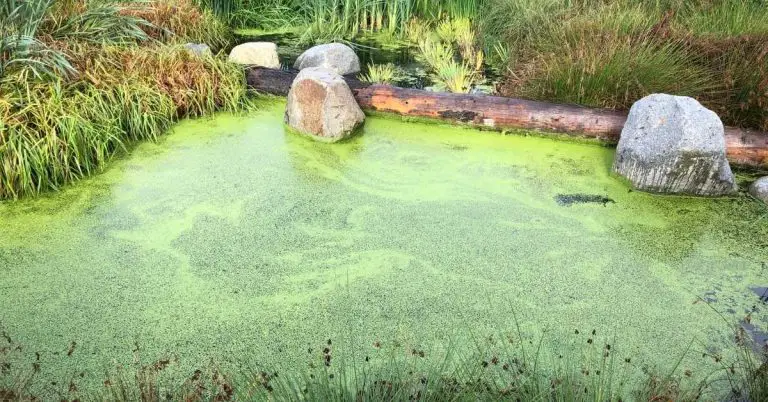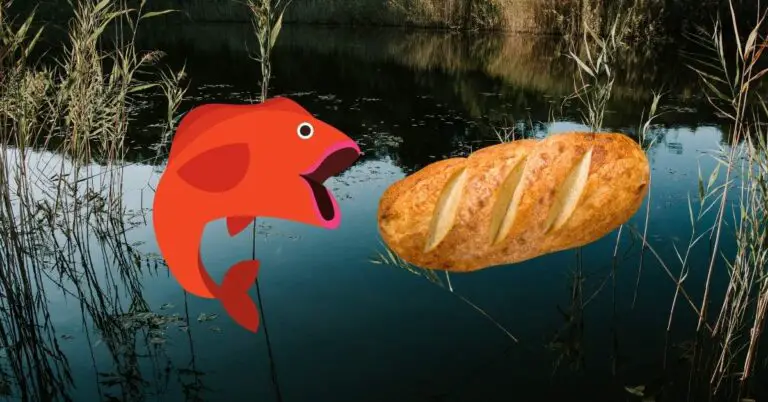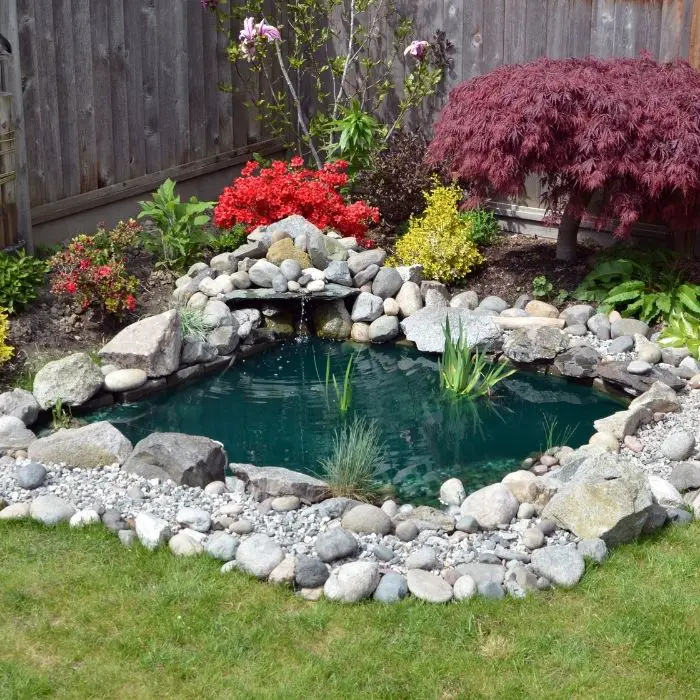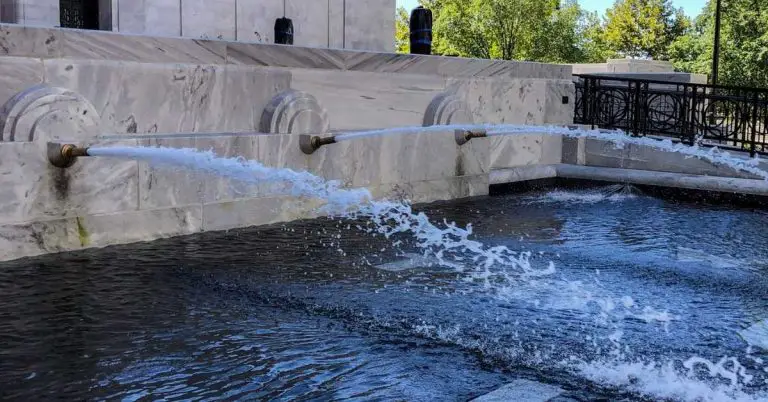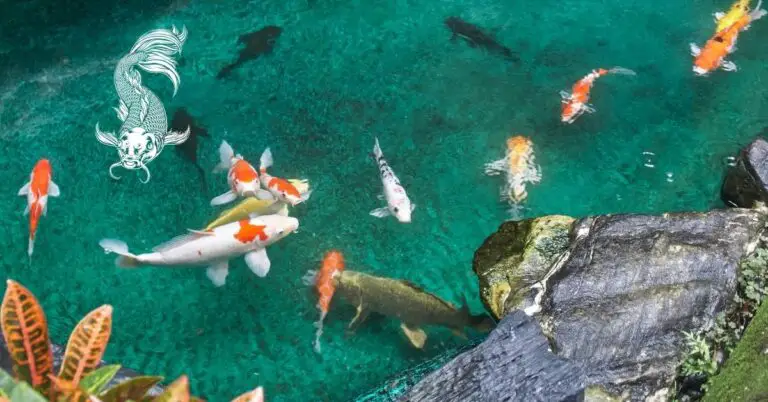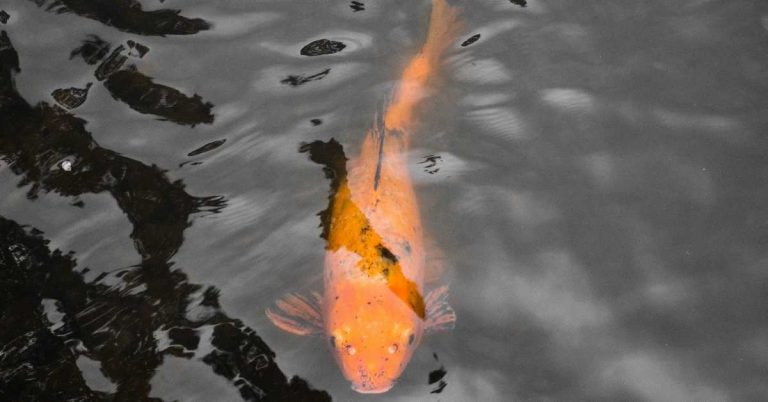Which Garden Pond Fish Are Safe To Eat
Whether you’re a garden pond enthusiast or considering home aquaculture, anyone who has looked at the creatures swimming in their backyard has probably asked themselves the same question: can I eat my pond fish? Should I?
If your garden pond is clean and filtered, your pond fish should be safe to eat. Even gold fish are edible. You can also raise pond fish specifically for eating, in which case you should chose hardy, fast growing and tasty fish species, and ensure you provide them with the space and care they need.
Please note that in this article, I am only speaking about homegrown pond fish – namely, fish that come from a freshwater pond that you build and maintain. Wild pond fish are often edible, of course, but require different considerations before eating them.
So if you’d like to get more fish in your diet (it’s often recommended you eat fish two times a week), or whether you’re just curious about the fish you already have, this guide to edible garden pond fish will answer your questions.
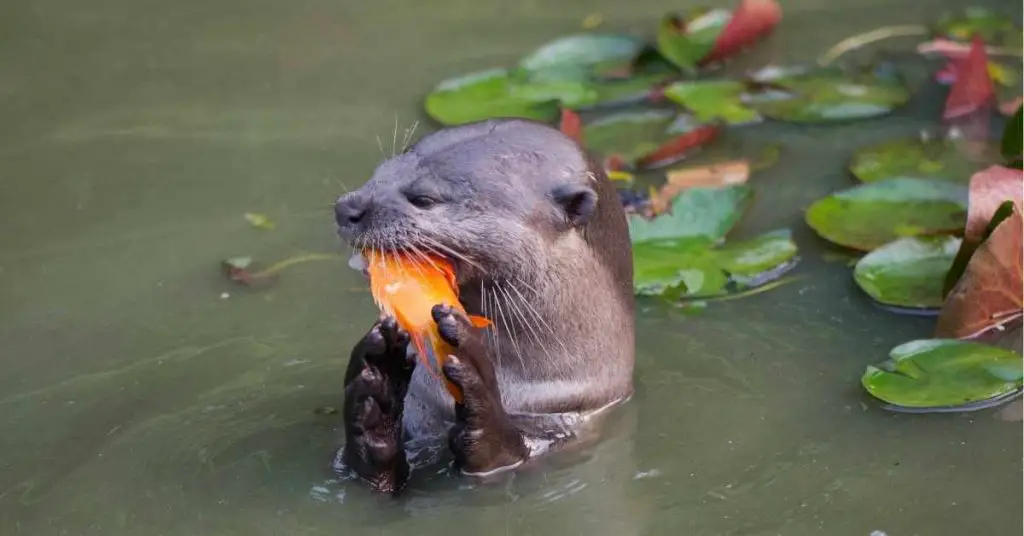
Edible Fish For Small Garden Ponds
While typical garden pond fish are technically edible, they don’t taste good or grow quickly, and can be expensive. This makes them poor choices for eating. Many backyard ponds are small and decorative. If they were not specifically built for raising fish to eat, then they likely won’t support some of the larger (and tastier) fish species.
That said, you could likely eat several of the fish species you have in your pond. Here are some common backyard pond fish that you can eat:
Goldfish
Goldfish are edible – but please don’t swallow them whole. Especially if you’re getting them straight from a bowl, they may be harboring dangerous bacteria if you eat them raw. But more importantly, it’s just cruel.
But if you want to humanely kill, cook and eat goldfish, you can. But you probably don’t want to. Goldfish will be bony, and they probably won’t taste very good. This is because all they eat are pellets (and you are what you eat).
Koi Fish
Koi fish are also edible. They’re descended from carp (a wild, edible fish), and they are eaten in some cultures. However, most people choose not to eat their koi fish.
The first reason not to eat koi is that they are expensive. This is because they beautiful, prized fish. In fact, they are even revered in Japanese culture and believed to symbolize good luck. Think of eating koi like eating a beautiful rose that you work hard to cultivate. Just because you can, do you really want to?
The second reason not to eat koi is that they just don’t taste very good. I haven’t personally ever tried koi, but according to reports it is touch and gelatinous. So the cost-benefit for eating koi from your own backyard pond just doesn’t make sense.
Minnows
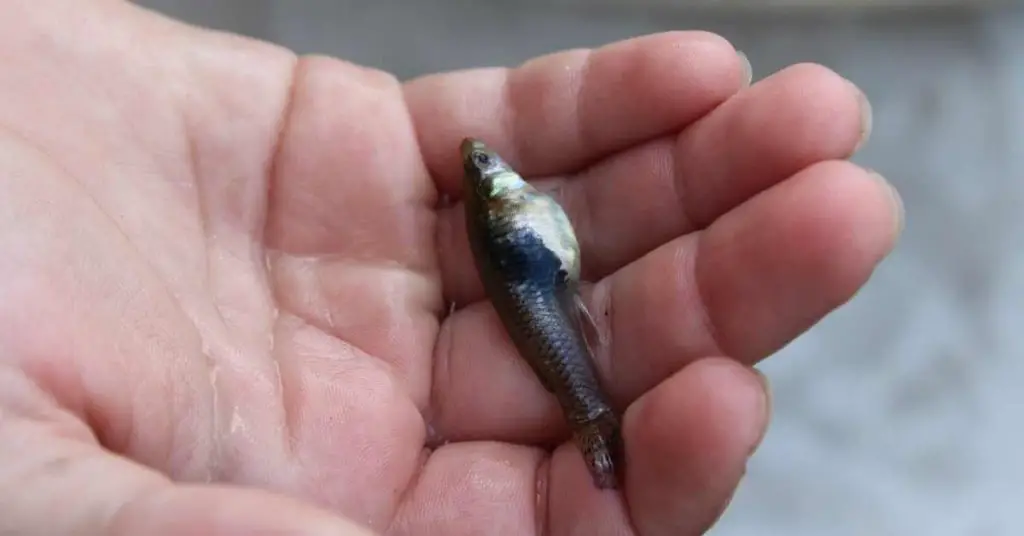
Minnows are a small, edible fish that you could grow in a smaller backyard pond. They taste much better than goldfish or koi. Deep fried minnows are a common French dish called ‘fritures,’ (find a recipe here), and you can also bread them to make fish sticks. Even simply boiling them will work. Minnows are like sardines in that you don’t have to de-bone or gut them, making them an easy and nutritious meal.
However, there are things to keep in mind before adding minnows to your backyard pond. They reproduce rapidly, and can quickly take over your whole pond ecosystem. For this reason, they are not good to introduce to a pond that you also want for goldfish and koi. They are better kept in ponds with larger fish that will eat them to keep their numbers in check. For example, bass and panfish like to eat minnows.
But minnows have some big advantages too. You don’t need to feed them, and you can use them as as bait. They also eat mosquitos and will keep your pond clean.
Best Edible Fish For Large Ponds (ie Home Aquaculture)
If you would like to build a backyard pond specifically to raise fish for eating, then you need to chose fish that grow quickly and require minimal maintenance. The size of your pond and your location will also determine the best pond fish to grow for eating.
Like we’ve covered, fish raised in a typical backyard pond are edible, but not necessarily desirable to eat. But there is a growing interest in home aquaculture, which is basically home fish farming.
Home aquaculture can often be more intensive than the average pond enthusiast is up for (learn more about it here). That said, if you have space for a larger pond, and are willing to wait for your fish to grow, then you will be able to enjoy the fruits (er, fish?) of your labor.
When deciding on a fish species to grow specifically for eating in your backyard, you should think about your goals – do you want to eat from your pond regularly or just from time to time? If you want to feed a whole family consistently with fish multiple times a week, then you are going to have to go down the rabbit hole of more intensive home aquaculture. A warning: this will likely be expensive, time consuming and sometimes frustrating. But if you’re up for it, it can also be very rewarding.
If your goals are to simply enjoy edible fish from your backyard pond occasionally, you can do this easily when you chose the right fish species for your environment. Whether you have a large backyard pond or are planning to build one, you will want to chose species that grow quickly, require minimal maintenance, and are suited for your location.
The following are generally considered the best fish to raise for eating in a backyard pond. They will require at least a 1000L pond, and of course clean, filtered water and a healthy pond ecosystem (learn more about why sustaining a pond ecosystem is so important here).
Carp
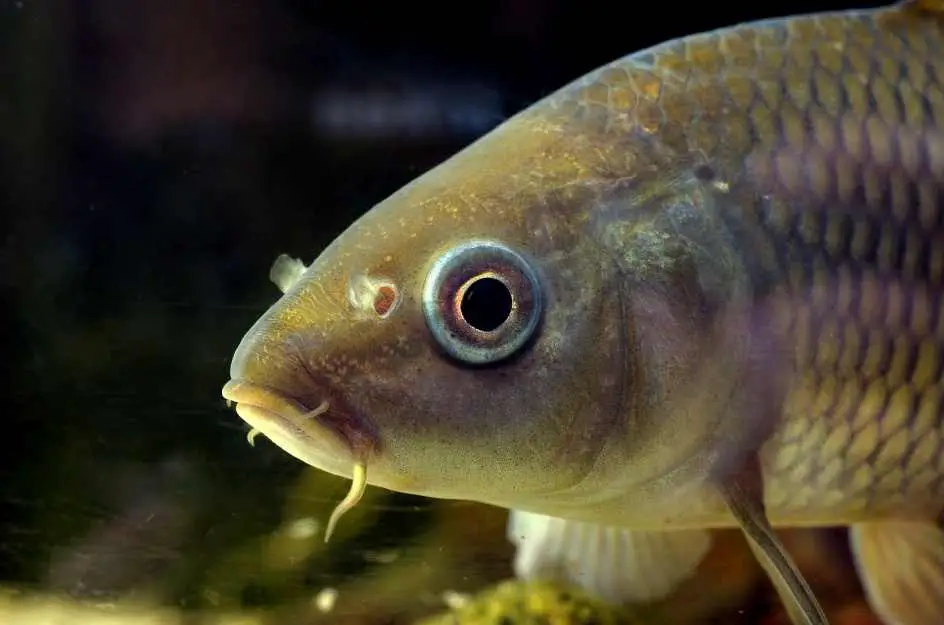
Like goldfish, carp aren’t typically known for being tasty fish, but when they are raised properly in fresh, clean water, and prepared properly, they can actually be quite delicious. Carp make good choices for beginners because they are hardy and also resistant to disease.
Ideal Water Temperature: Carp will grow best when the water stays between 80-85 degrees, but they’ll do fine anywhere from 70-90 degrees. This adaptability is another reason why carp are great for backyard ponds.
Time to Maturation: Carp can put on 5-10 pounds in about 2 years.
Diet: Grains and pelleted feed, plus food in their ecosystem
Channel Catfish
Catfish are great choices for edible pond fish because they will eat anything, they grow quickly, they’re hardy (so temperature change isn’t as huge a factor), and they can also live in low oxygen water. Channel catfish are usually the preferred species for home ponds, but brown, black and yellow bullhead catfish can also work.
A catfish can reach one pound in just five months. They are also resistant to disease.
Ideal Water Temperature: 75-84 degrees
Time to Maturation: About 2 years. Most will be 1.25 pounds at about 18 months.
Diet: Commercial Fish Food
Tilapia
Tilapia are a great fish species to raise in backyard ponds because they taste great. They’re easy to raise because they are resistant to disease and parasites, and they can tolerate low oxygen levels and higher ammonia concentrations in their water. They can also tolerate saltwater when the salinity is around 16-20 parts per thousand.
Ideal Water Temperature: If you want them to grow quickly, 84 degrees is the best temperature, but they can tolerate anywhere from 64-90 degrees. Temperatures below 50 degrees will be fatal.
Time To Maturation: 8 months
Diet: Plant based foods and insects. They can also eat blue green algae and plankton
Sunfish

Sunfish are often overlooked, but their small size and excellent taste might make them a great option for your backyard pond. Sunfish and sunfish hybrids are a white meat is healthy and nutritious.
Ideal Water Temperature: 68-86 degrees.
Time to Maturation: 2 years
Diet: Commercial Feed
Trout
If you have the space and want to put in a little more work into your pond, trout are a nice choice because they grow fast and taste delicious.
Ideal Temperature: Trout do better in colder temperatures, between 50-68 degrees. Raise them over the winter and harvest when the water gets over 71 degrees.
Time to Maturity: One season. A 10cm fingerling will be ready to harvest (plate size) in one season.
Diet: Commercial Feed (pelleted food). Note that trout can be difficult to feed because they feed by vision. If they can’t see their food, they can’t eat it.
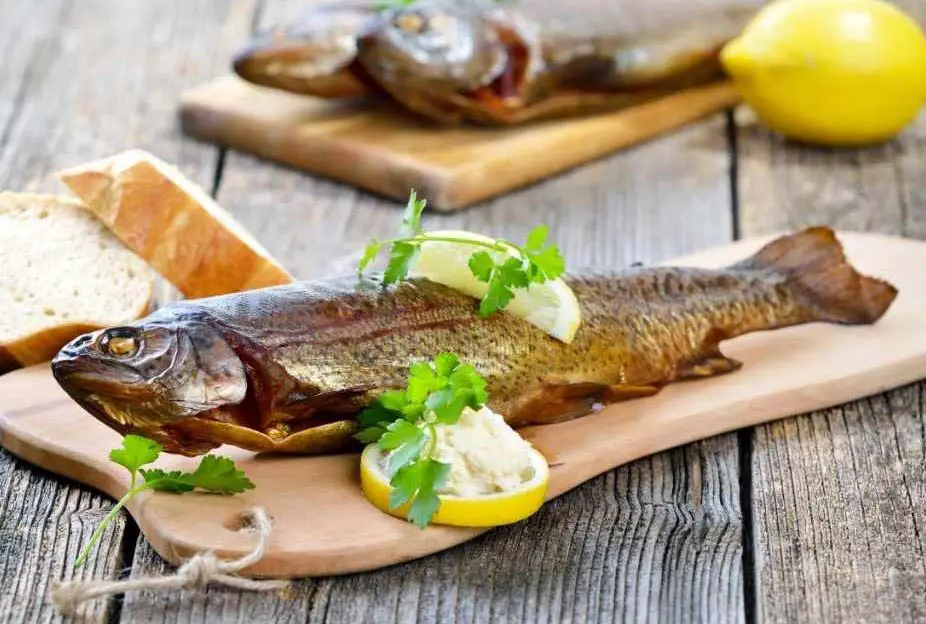
More Things to Consider Before Eating Pond Fish
If you decide that you want to eat the fish you raise in your own pond, then there are several important factors to bear in mind:
- Clean, Well Circulated Water: You must maintain a very clean pond if you plan to eat what it produces.
- Fish Diet: If you plan to eat your fish, be sure to buy food that is meant for meat fish (this should be available where ever you buy your fish food).
- Don’t Eat Pond Fish Raw: Leave sushi to the experts. Even if your pond is clean, your pond fish may harbor bacteria, so they should be cooked.
- Zoning Issues: If you are planning to build a bigger pond, be sure to research municipal zoning issues for your area. This is especially true if you plan to sell your fish.
- Kill humanely: Please don’t swallow any goldfish whole (come on!). Research how to humanely kill any fish you plan to harvest
Final Thoughts
You can eat your backyard pond fish, but that doesn’t always mean you should. If you would like to use your pond to raise fish for eating, then you will need to do a lot more research and a lot more work – but it may be worth it when you get to eat the freshest possible fish from your own backyard.

